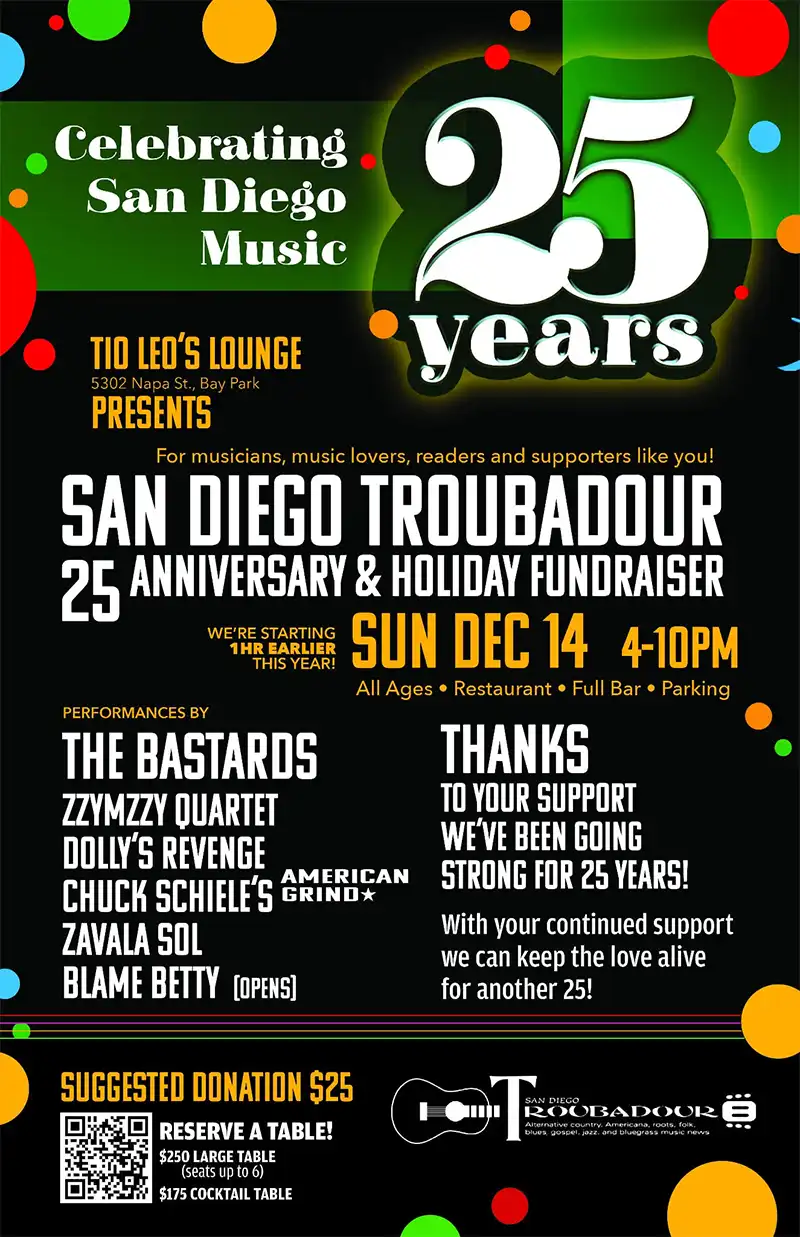Featured Stories
The Fabulous, Superlative Marty Stuart
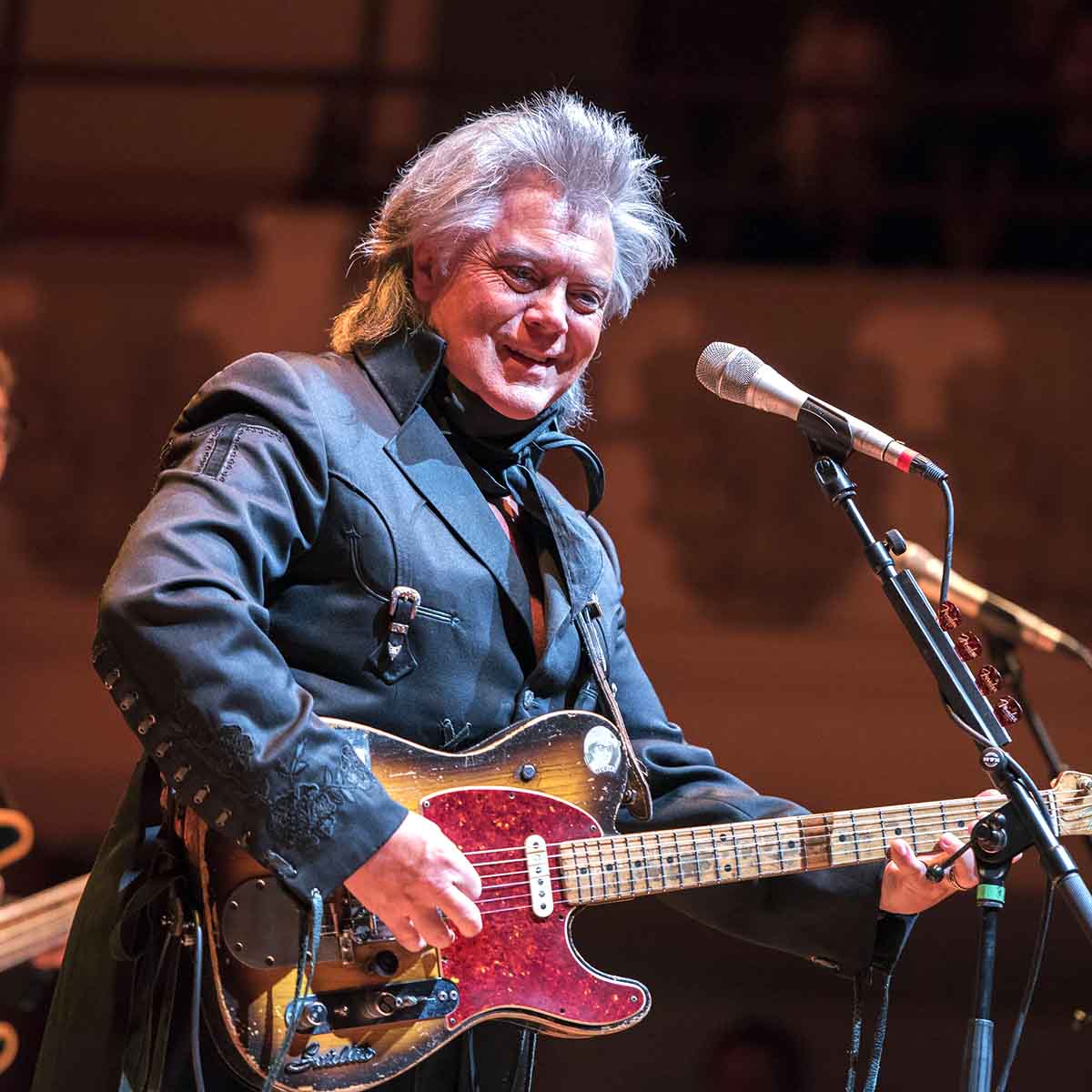
Marty Stuart
Before he became a country music hall of famer and multiple Grammy winner, Marty Stuart was a young hot-shot guitarist and mandolin player for Lester Flatt, Doc Watson, and Johnny Cash. And when we say “young,” we mean he was 14 when he joined Flatt’s band in 1972.
With full-on superstardom still ahead of him, he played on two of the best albums most folks have never heard of—much less heard: Class of ’55: Homecoming in 1986 and Rhythm, Country & Blues in 1994. From those projects, Stuart obtained two of the more noteworthy guitars in his justifiably famed guitar collection—in addition to lasting relationships that have guided his career and life.
Now touring in support of his latest (and tenth) release with his band the Fabulous Superlatives, an all-instrumental outing titled Space Junk, Stuart spoke with Troubadour ahead of his July 27 show at the Belly Up Tavern.

Little Marty with his first guitar.
Stuart said the new album, which was issued exclusively on vinyl on April 12 for Record Store Day (wide release is set for this fall), had to wait a decade before the label was ready for it.
“I thought, ‘You know what, the world needs a 20-song instrumental record RIGHT NOW!’ Well, I was informed that the world did NOT need a 20-song instrumental album right now, and so we’ve sat on that for like 10 years.
“Instrumentals are just a way of life for me,” Stuart said, citing childhood influences the Ventures and Herb Alpert & the Tijuana Brass. “Every band I’ve been in, from Lester Flatt to Johnny Cash, played instrumentals. From the very first album the Superlatives did [in 2003], we’ve always played instrumentals.
“Somewhere along the way we had 15 or 16 that we had stacked up and were playing at sound checks. We wrote four or five more” and headed into the studio.
Stuart said the 10-year delay wasn’t necessarily a bad thing. “I never worried about it because I knew the music was right.”
Interestingly, while Space Junk is a two-record set on 12-inch discs, which are 45 rpm discs (the higher spin rate provides a higher fidelity sound). Online fan forums are full of discussion about folks who overlooked the 45 rpm notice on the packaging, saw a 12-inch record, and simply assumed it was a 33 rpm LP.
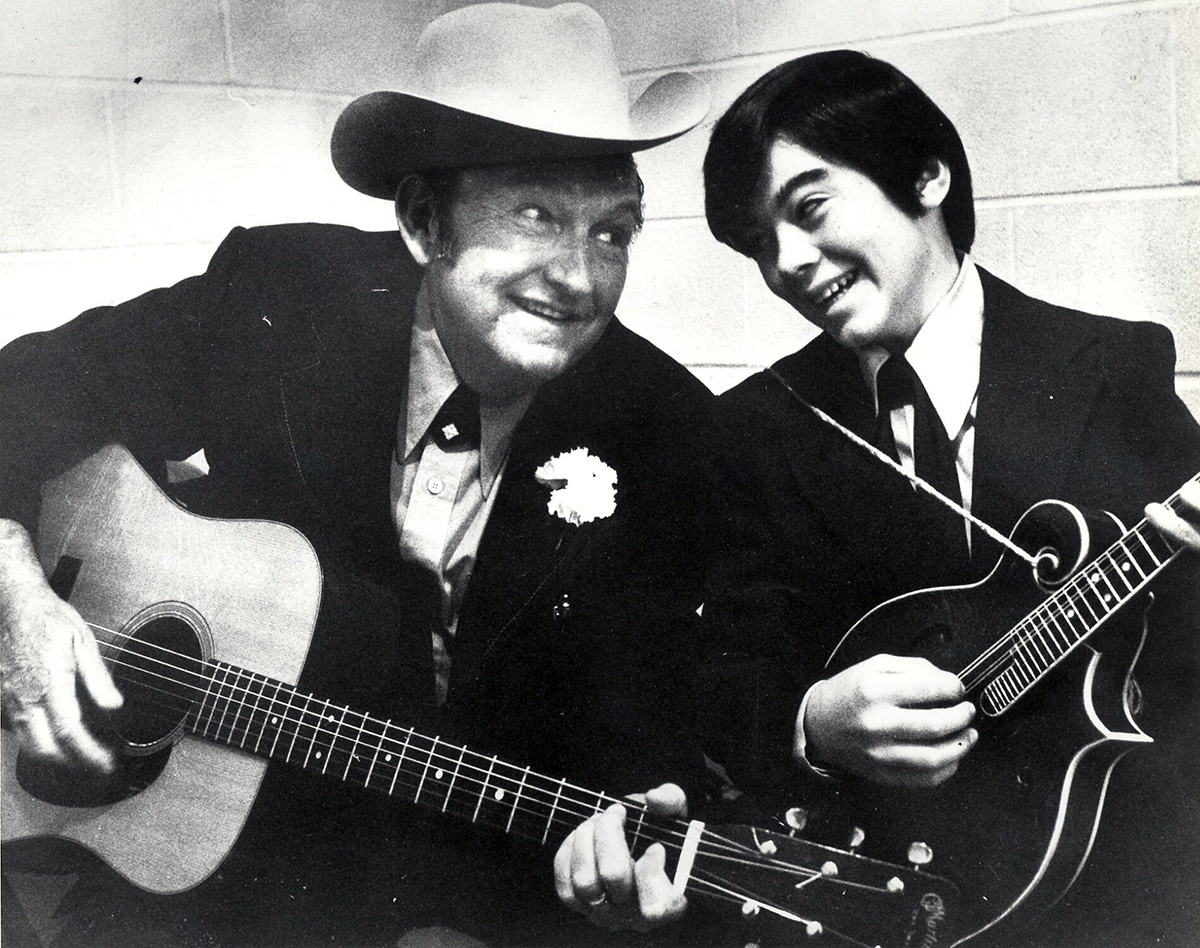
14-year-old Marty with Lester Flatt.
While Stuart said he hadn’t seen those online discussions, “I walked into a room the other day at an architect’s office in Nashville and they were playing it at 33, and I said, ‘You gotta play it at 45!’ He said, ‘I like it at 33,’ and I said, ‘You’re the boss.’
“It’s kind of trippy!” at 33 rpm, he admitted, but added he’s not likely to listen to the rest of the album slowed down.
The Fabulous Superlatives has been Stuart’s band for the last two decades and has been remarkably stable with drummer Harry Stinson and fellow guitarist Kenny Vaughan there from the beginning. And bassist Chris Scruggs (grandson of bluegrass legend Earl Scruggs) has a decade in the band now.
Stuart was asked if he attributed the band’s longtime stability more to wise planning in the selection of the members—or luck—and he laughed before replying.
“I don’t think planning had a thing in the world to do with it! I was trying to take two years off. From 1972 to 1999, I didn’t go to bed on time. It was time to pull back. I saw Kenny on television playing with Lucinda Williams; I’d never met or seen Kenny Vaughan before. He was kind of a quirky character, kind of like Luther Perkins was to Johnny Cash. Harry and I had worked together a lot. I bumped into Kenny in Nashville at something, and we booked lunch. By the time the ticket came, my job was to find us a drummer and his was to find us a bassist.
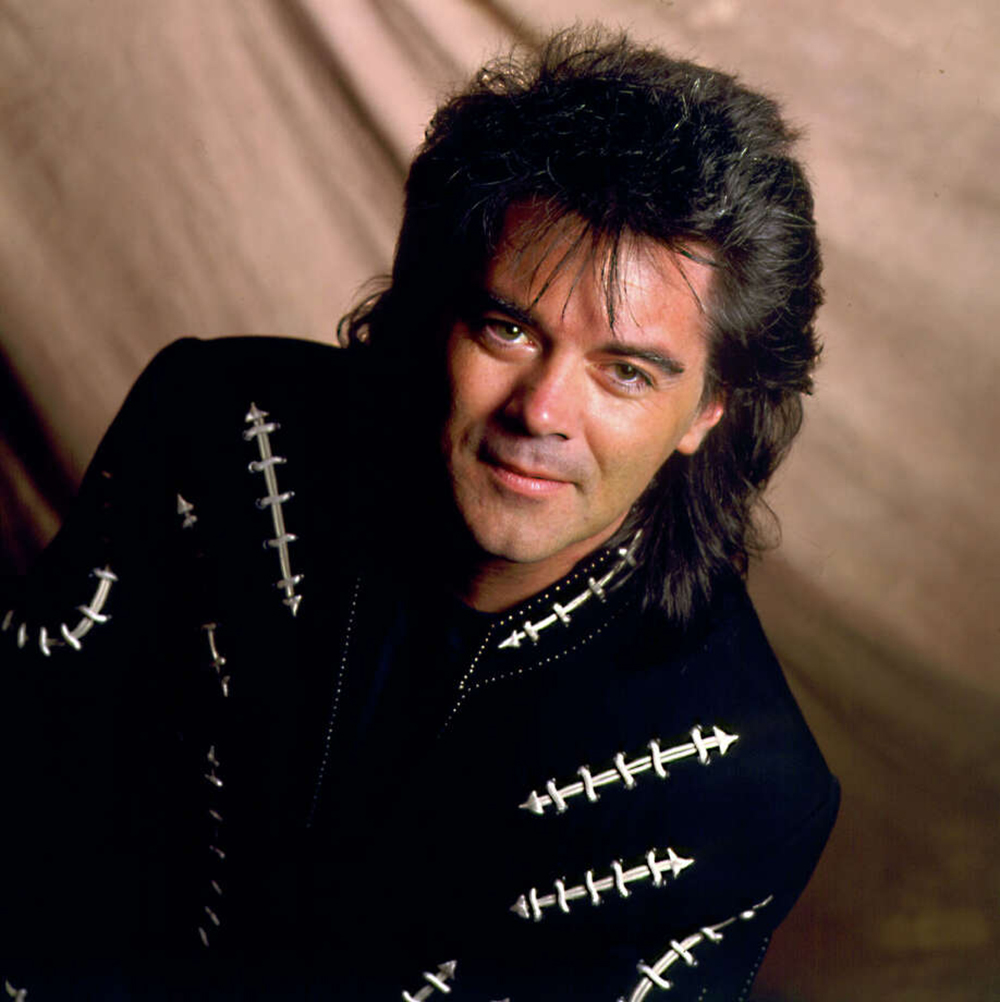
Marty in the 1990s.
“This band has never had an argument. We laugh and enjoy each other’s company. We keep it all about the music and let other people worry about the other stuff.”
Stuart was still mostly unknown, with two albums under his own name that hadn’t done much, when as a member of Cash’s band he ended up in the original Sun Studio alongside Cash and fellow Sun Records veterans Roy Orbison, Jerry Lee Lewis, and Carl Parkins for the Class of ’55 project. In a documentary about the project, hosted by Dick Clark, Stuart can be seen standing next to Dave Edmunds and Rick Nelson as part of the chorus on “Big Train From Memphis.”
“I wish everybody on Planet Earth could have been at the Peabody Hotel when Johnny, Jerry Lee, Roy, Carl, and Sam Phillips all walked into the room for the press conference. There was such a buzz! That entire week was like that—the music was a little soggy, the songs weren’t the best, but it didn’t matter because that was the last time that music was made in Memphis.
“At the end of those sessions, I was still in John’s band and Carl gave me his guitar and said, ‘Go be a cat.’ Sam Phillips—I called him Uncle Sam—was someone I always talked to before [I made] big life decisions. After that session, I called Sam and said I was thinking of going out on my own, and he said, ‘Does John know?’” Stuart told him Cash knew and was supportive. “‘In that case, you have my blessing,’” the Sun Records founder told him.
The Rhythm, Country & Blues album in 1994 paired some of the top R&B acts with Nashville stars on duets of mostly R&B songs. That project’s song list reads like a who’s who of both country and soul music:
- Vince Gill and Gladys Knight, “Ain’t Nothin’ Like the Real Thing”
- Al Green and Lyle Lovett, “Funny How Time Slips Away”
- Aaron Neville and Trisha Yearwood, “I Fall to Pieces”
- Little Richard and Tanya Tucker, “Somethin’ Else
- Patti LaBelle and Travis Tritt, “When Something Is Wrong with My Baby”
- Sam Moore and Conway Twitty, “Rainy Night in Georgia”
- Clint Black and the Pointer Sisters, “Chain of Fools”
- Natalie Cole and Reba McEntire, “Since I Fell for You”
- Chet Atkins and Allen Toussaint, “Southern Nights”
- George Jones and B.B. King, “Patches”
“When that [project] was conceived, Don Was produced that for MCA and I was on MCA. He asked who I wanted to sing with, and without hesitation I said the Staples Singers. Because I wanted to know the Staples Singers. They assigned us ‘The Weight,’ which is a suicide mission, because you can’t equal the original. But from the first time we met at rehearsals, we became family. And the end of that story is I was a pallbearer at Pops’ funeral. I called him Moses because I didn’t make any big decisions without talking to Pops.
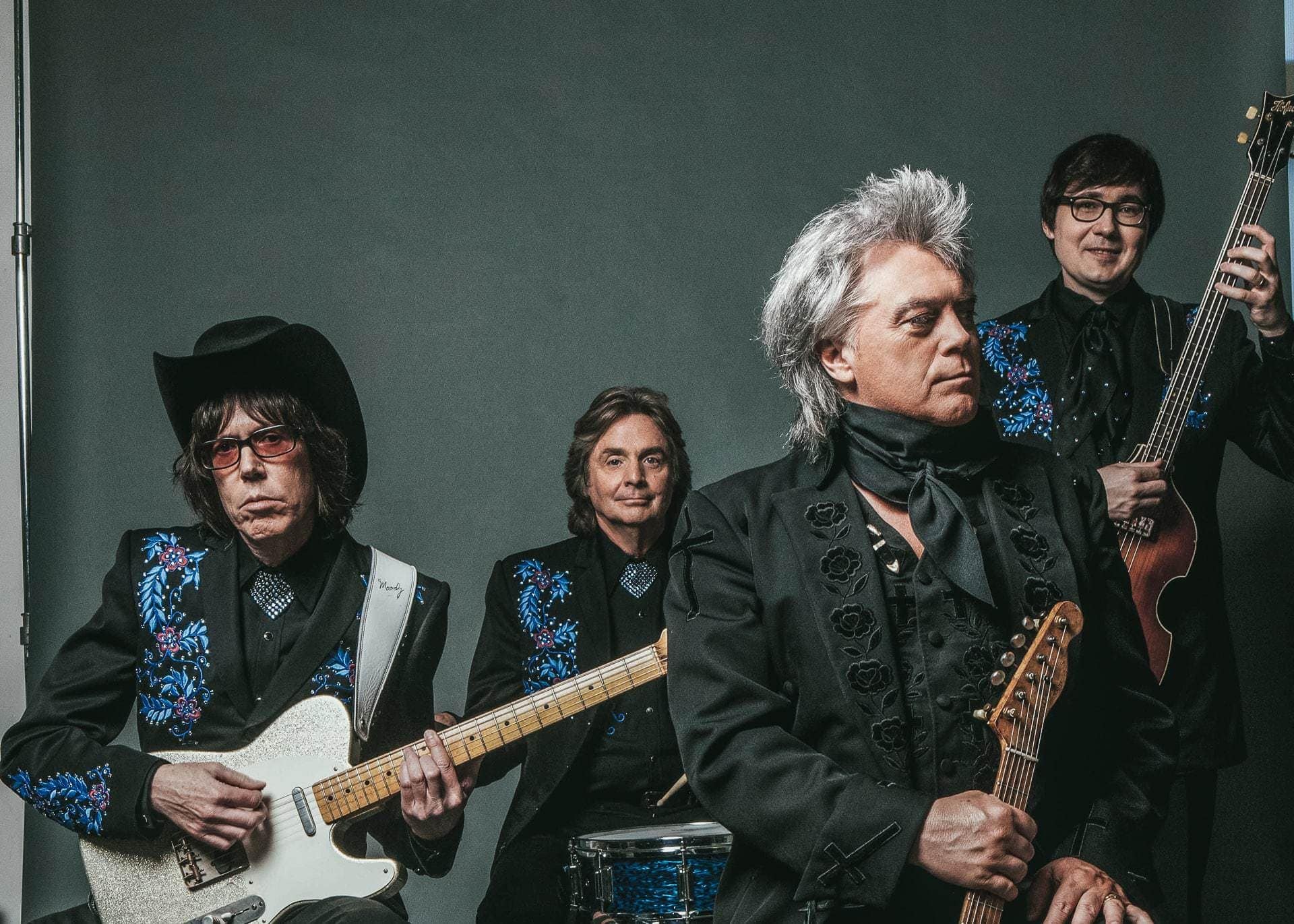
Marty Stuart and his Fabulous Superlatives. Photo by Alysse Gafkjen.
“They brought that project to the Universal Amphitheater to do a television special or something like that, and I happened to be backstage when the Pointer Sisters walked in and saw the Staple Singers. You never saw so much church happiness in your life!”
The relationship with the Staples became lifelong, Stuart said, referring to them not as “the family” but simply “family.”
Roebuck “Pops” Staples passed in 2000. Stuart had a concert scheduled in Chicago a few years later and invited Mavis and Yvonne Staples to the show. As he explains in an interview filmed for the 2015 documentary Mavis! “When they came, there was a guitar case and this was in it. On the back it reads, ‘To our brother Marty. I know Pops is smiling. From your family, the Staples. We love you always, Mavis and Yvonne. They wrote that on the back and handed me this guitar.”
“The man who had this before I did, he used it as a weapon for good and that’s what it’s about.”
Marty Stuart comes to the Belly Up in Solana Beach on Sunday, July 27, 8pm.


